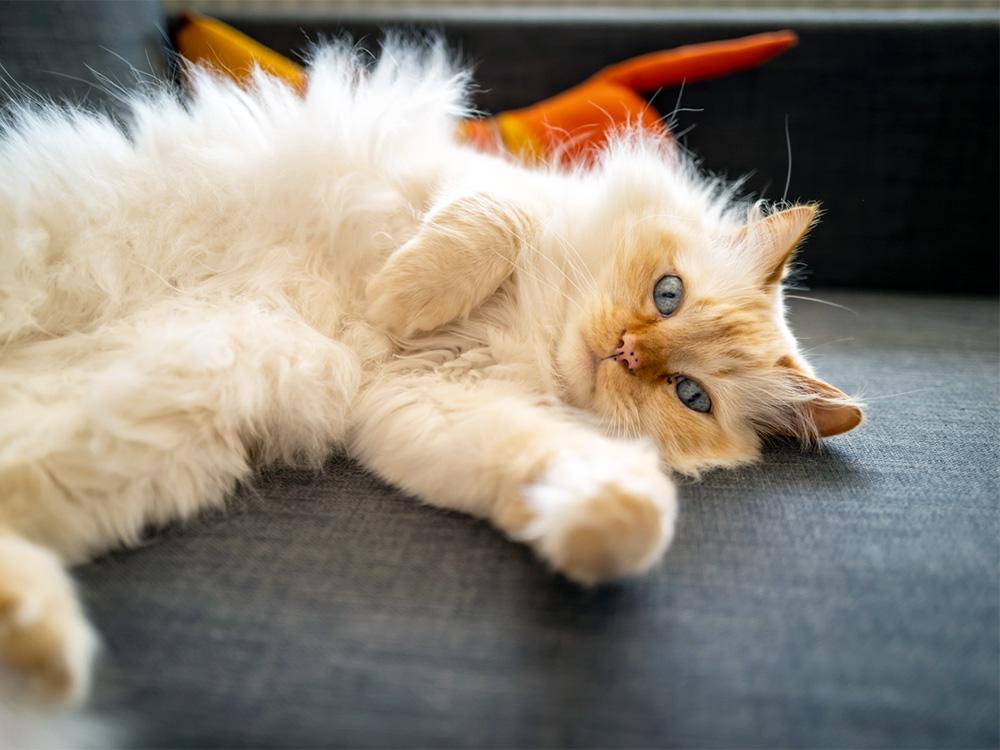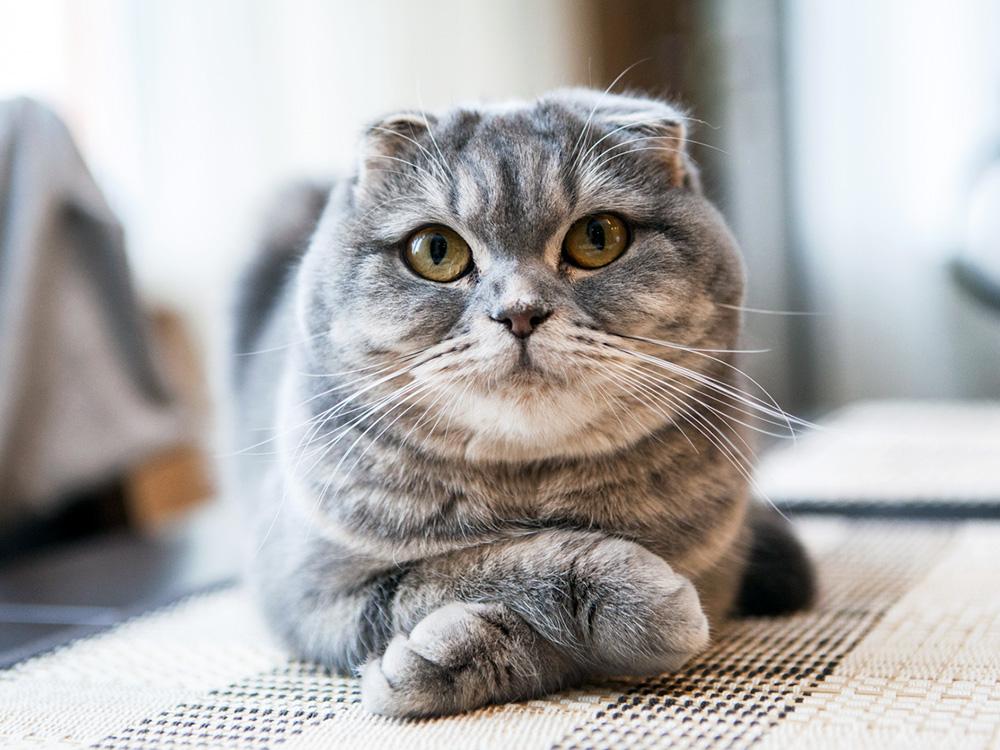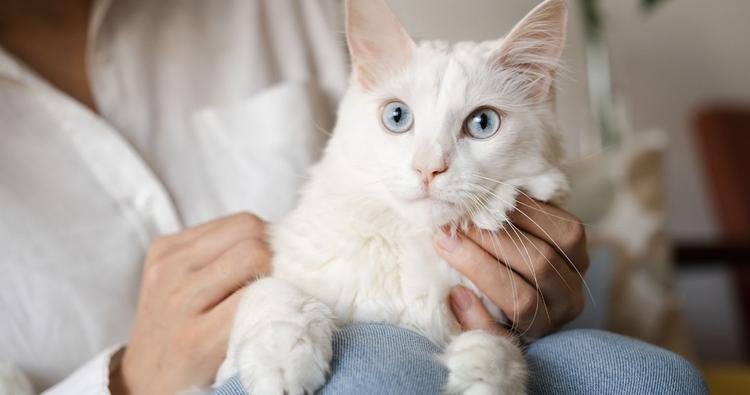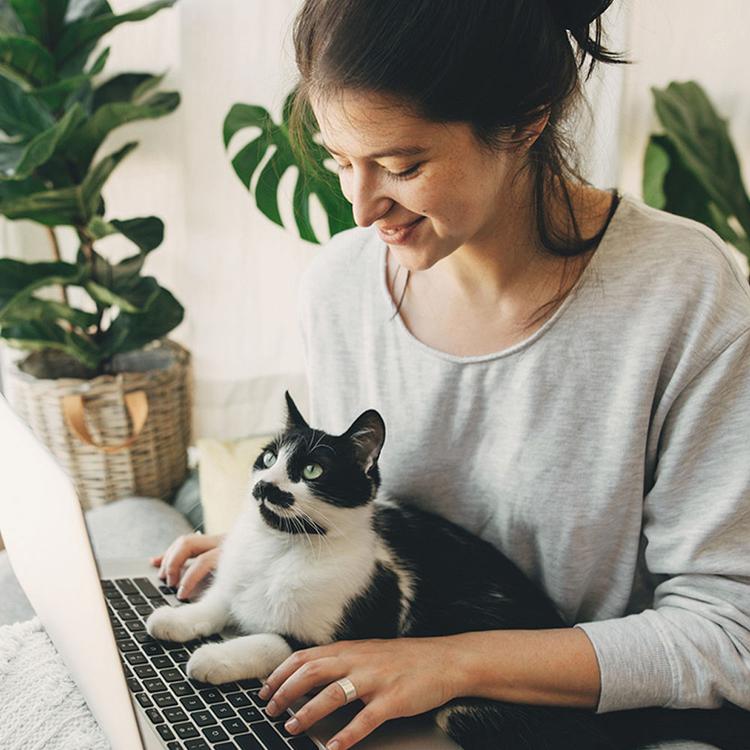by Alicia Kort, | February 11, 2024

Lightsy / Stocksy
You’re probably here because you’ve decided that you want to bring a cat into your home. That’s a great choice — cats often don’t get the credit they deserve. They’re cuddly and low-maintenance pets. But as a potential first-time cat parent, you might be wondering about cat breeds, especially if you grew up in a household with dogs.
In this article:
Unlike dogs, cat breeds do not range widely in size and energy level depending on breed. That said, there are still little differences you should keep in mind as you find your forever feline companion. This is why we rounded up the best cat breeds to help give you some insight.
Why do cats make the best pets?
Cats make the best pets because they are loving, independent, and easier to care for than other pets. When you choose cats, you might get a movie marathon snuggle buddy, a birdwatcher (just try not to smile at a video of a cat “chirping” at birds), and a chaotic sprinter who always reminds you when it’s dinnertime. Cats have big personalities but they build strong bonds with their people, just like how babies and dogs bond to adult humans.
Cats are affectionate (on their own terms, which makes it more worth it when they plop in your lap for a long nap).
Cats are lower maintenance than dogs. They don’t have to be taken out to go to the bathroom and can get all of the exercise they need in small spaces like apartments.
Cat parents are healthier than non-cat parents. A 2008 study showed that cat parents have a lower resting heart rate in stressful situations and are less likely to die of a cardiovascular event than non-cat parents.
10 Best Cat Breeds

Matheus Guimarães / Pexels
1. Domestic Shorthair
The Domestic Shorthair is the most popular type of cat. They technically aren’t a cat breed because the Domestic Shorthair, also known as the “house cat,” is a mix of a multitude of other short-haired cat breeds. According to the ASPCA, there are more than 80 million Domestic Shorthairs in homes. They can vary widely in size and personality, so it’s important to take note of their temperament and ask shelter staff what kinds of homes they would best for. Some Domestic Shorthairs might be too shy and skittish for homes with families with small children, for example. What they all do have in common is that these cute cats have short fur and aside from brushing once in a while, the cats will take care of cleaning it themselves.
Weight: 6 to 16 pounds Best Trait: Low-maintenance coat
Search for adoptable Domestic Shorthairs on Adopt a Pet

miezekieze / Pixabay
2. Maine Coon
Maine Coons are very majestic cats. They have long fur, which has helped them survive through winter, and Lynx-like fur tufts on their larger-than-normal ears. Plus, this breed is significantly larger than your average cat breed, both in size and weight. This is one of the reasons why the Maine Coon has a shorter lifespan than the Domestic Shorthair. They typically live for nine to 13 years.
And the Maine Coons’ fur is water-resistant, so they’re more inclined to swim (or play with water), unlike most cats. These fluffy cats also tend to be friendlier and are often referred to as being more “dog-like” in personality. They like to be around humans and are less likely to hide under the bed when you have visitors, so they’d benefit more from living with families who are home more to spend time with them.
Weight: 9 to 25 pounds Best Trait: Friendly
Search for adoptable Maine Coons on Adopt a Pet

Maja Topcagic / Stocksy
3. Siamese
Siamese cats boast stunning blue eyes and darker fur around their faces, ears, and paws, though the fur can vary in color slightly depending on the cat. Similar to the Maine Coon, the Siamese is also often compared to dogs. They are loving cats who craves human attention, though they can sometimes form an extra special bond with one member of the family. This breed can be quite sensitive so they can benefit from having a fellow feline playmate, otherwise they can become lonely. Siamese are a short-hair breed, so grooming these cats is a breeze.
Weight: 6 to 14 pounds Best Trait: Highly affectionate
Search for adoptable Siameses on Adopt a Pet

Maja Topcagic / Stocksy
4. Ragdoll
The Ragdoll breed got their name because they tend to totally relax and go limp in their person’s lap during petting sessions. They are lovey-dovey and will beg for pets with their throaty meows and are big purrers. This fluffy cat might be larger than some house cats, but they are gentle giants. Ragdolls love to be around their families and are chill enough personality-wise to do well with other pets and respectful children. Unfortunately, they are not great fits for families who suffer from allergies — this medium-haired cat doesn’t have an undercoat, but they do shed and require brushing at least twice a week to avoid knots in their fur.
Weight: 9 to 20 pounds Best Trait: Lapcat
Search for adoptable Ragdolls on Adopt a Pet

Pierre Aden / Shutterstock
5. Birman
You might be doing a double-take because these kitties look very similar to Ragdolls, but the Birman is slightly smaller, yet has similar fluffy fur and signature blue eyes. This kitty is great around children and pets because they are docile and love attention — so much so that you shouldn’t be surprised if you notice your Birman following you from room to room. They’re like little shadows and can become anxious and destructive if left alone for too long. Their fur is silky-smooth and generally low-shedding, but they do require weekly brushing.
Weight: 7 to 14 pounds Best Trait: Family-friendly
Search for adoptable Birman cats on Adopt a Pet

Casey Elise Christopher / Shutterstock
6. American Shorthair
If you’re on the hunt for a cat who acts like a cat (rather than a dog) yet wants to hang out with you, then the American Shorthair is the breed for you. This cat is independent, kid-friendly, and also loving. American Shorthairs are often identified by their round faces, because their coloring can vary widely. They like to do their own thing and aren’t prone to separation anxiety like other breeds on this list, but they aren’t so aloof that they will spend most of the day hiding from their person. Despite their breed name, the American Shorthair does not have the shortest and most low-maintenance fur of the cats on this list. They have a rather thick coat, which requires weekly brushing, and they do shed year-round.
Weight: 6 to 15 pounds Best Trait: The best of both worlds — independent yet affectionate.
Search for adoptable American Shorthairs on Adopt a Pet

Alina Lebed / Shutterstock
7. Burmese
The Burmese cat is easily recognized by their stunning hawk-like gold eyes. Their fur color can vary from platinum to sable brown. These kitties boast high energy levels and always want to play, so they should live in a household that’s ready for the chaos of a cat darting across rooms to go after a toy. Burmese cats are social, vocal, and open to both other animal and human playmates, though young children should be taught how to respectfully interact with cats first. Their coats are very short and silky — the Burmese will mostly take care of their own coat, but cat parents should assist them in removing dead hairs with a weekly brushing.
Weight: 9 to 14 pounds Best Trait: Playful
Search for adoptable Burmese cats on Adopt a Pet

Zbynek Pospisil / Shutterstock
8. British Shorthair
The British Shorthair is famous for their chubby cheeks. They are traditionally a blue-gray color, but their fur color can vary widely. Like many other cats on this list, the British Shorthair can thrive in households with other pets and small children. They do like spending time with their families and playing well after they leave their kitten stage, though they are happy with some alone time when their families leave for a few hours. Unlike other medium-to-large cats, this breed doesn’t mind smaller spaces; they aren’t as active as other cats on this list and are generally pretty quiet. This short-haired breed has a single-layer coat that only requires minimal brushing, usually during the British Shorthair’s shedding season.
Weight: 7 to 17 pounds Best Trait: Happy in small spaces
Search for adoptable British Shorthairs on Adopt a Pet

zhang kaiyv / Pexels
9. Ragamuffin
The Ragamuffin (which might be the best breed name that exists) is a medium-to-large cat that has a fluffy, rabbit-soft coat of fur. This furry kitty is not high-strung or anxious, like other cats. They are very patient with children, won’t protest too much if you scoop them up for some snuggle time, and just like to hang out. They’re similar to Ragdoll cats in that they often go limp when they’re being held or curled up in their person’s lap. But just because they’re chill doesn’t mean that they won’t get the zoomies and will still want to play. It takes them several years to reach their full-grown size, so they do remain in playful kitten mode for longer. Ragamuffins’ personalities might be more relaxed but their coats require more maintenance and need to be brushed twice a week.
Weight: 10 to 20 pounds Best Trait: Best for families
Search for adoptable Ragamuffins on Adopt a Pet

lafar / Shutterstock
10. Scottish Folds
The Scottish Fold, also called a Highland Fold, is renowned for their highly unique, folded-over ears, which gives them an owlish appearance. This rare breed of cat is a sweetie and loves to spend time with their families, though they do have an independent streak. These cats are also highly intelligent, so they need enough toys and other enrichment to keep them happy, but they are generally considered to be low-maintenance. They are happy in any size space and tend to be quiet pets, only “talking” when they want to. You might think that their folded ears might make them more prone to infection, but they are just as likely to get an ear infection as a straight-eared cat. Their coats are on the shorter side (though there is a long-haired version of the Scottish Fold) but should be brushed once a week.
Weight: 6 to 13 pounds Best Trait: Adaptable
Search for adoptable Scottish Folds on Adopt a Pet
What breed of cat should I get?
You should get the cat that best fits your family and living situation. For example, you might need a hypoallergenic cat if you have allergies. And if you want a docile, calm cat breed that is known for being great with younger children, you might be better off with a Scottish Fold or Ragamuffin, but not every cat from a specific breed acts the same. You are better off evaluating cats in person to see what their personality might be like. Cats can live for more than 20 years; they are a lifelong commitment that potential cat parents must be ready to make.
Instead of opting to get a cat from a breeder and spending up to $1,500, you can find plenty of cats in shelters around the country. Choose to adopt a shelter cat because you could be saving their life. Shelter cats would be so grateful to have their own space in a loving family home.
Commonly asked questions:
What cat breed is most popular?
The most popular type of cat is the Domestic Shorthair. There are more than 80 million Domestic Shorthairs in homes around the world.
What cat breeds should be avoided?
You should avoid wild hybrid cat breeds. These are mixed breed cats that are a cross between a wild cat and a domesticated cat, such as the Bengal, Savannah, Chausie, and Serengeti. They are partly undomesticated and are much harder to care for because their personalities might take after the wild cat they were bred from.

Alicia Kort
Alicia Kort is a writer and editor living in Brooklyn. She’s currently the senior commerce editor at Apartment Therapy. She’s been published in StyleCaster, Electric Literature, Newsweek, Interview, Brooklyn magazine and more. In her free time, she runs, reads, and spends time with her dog-nieces, Maya and Lady, and her cat-niece, Pepper.


